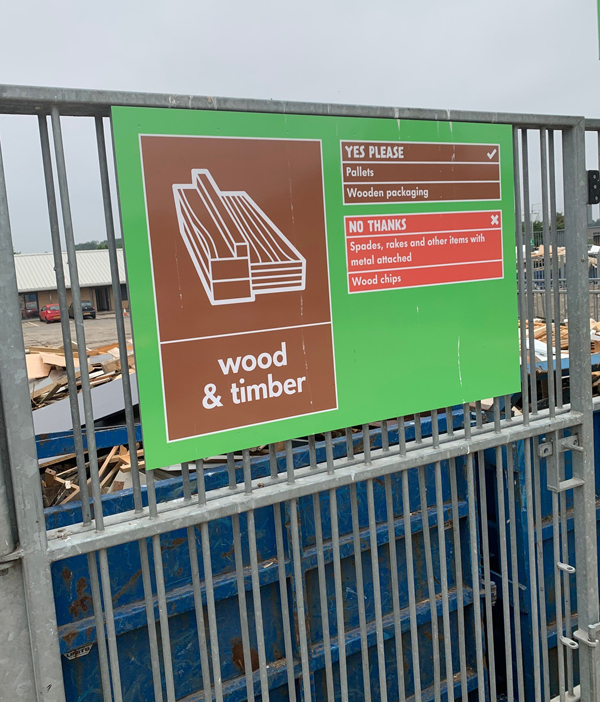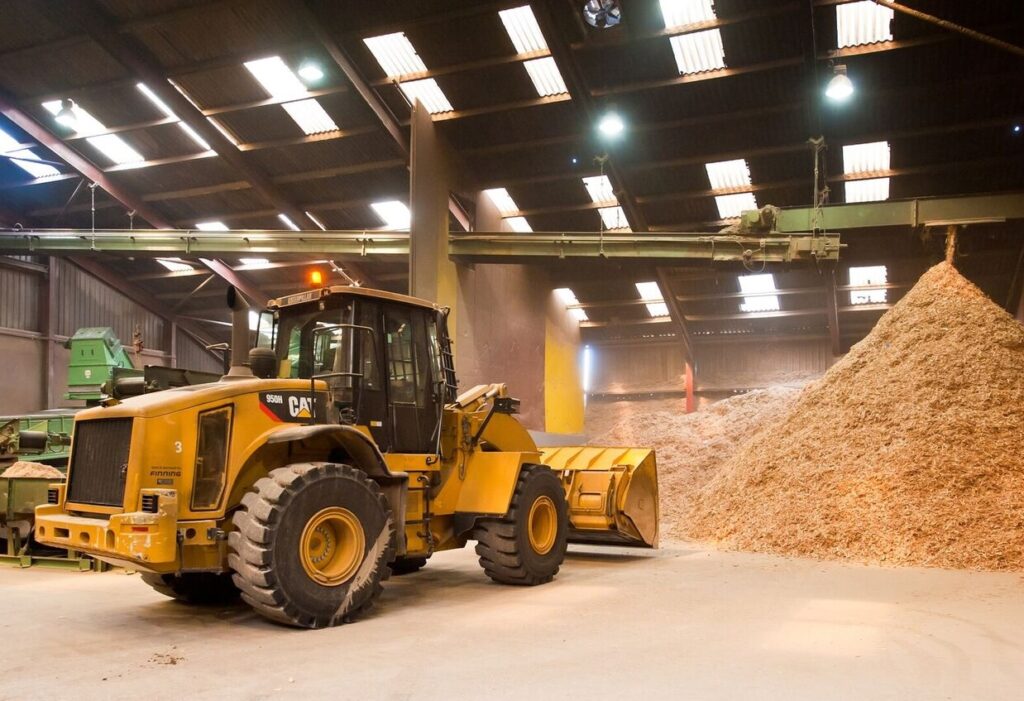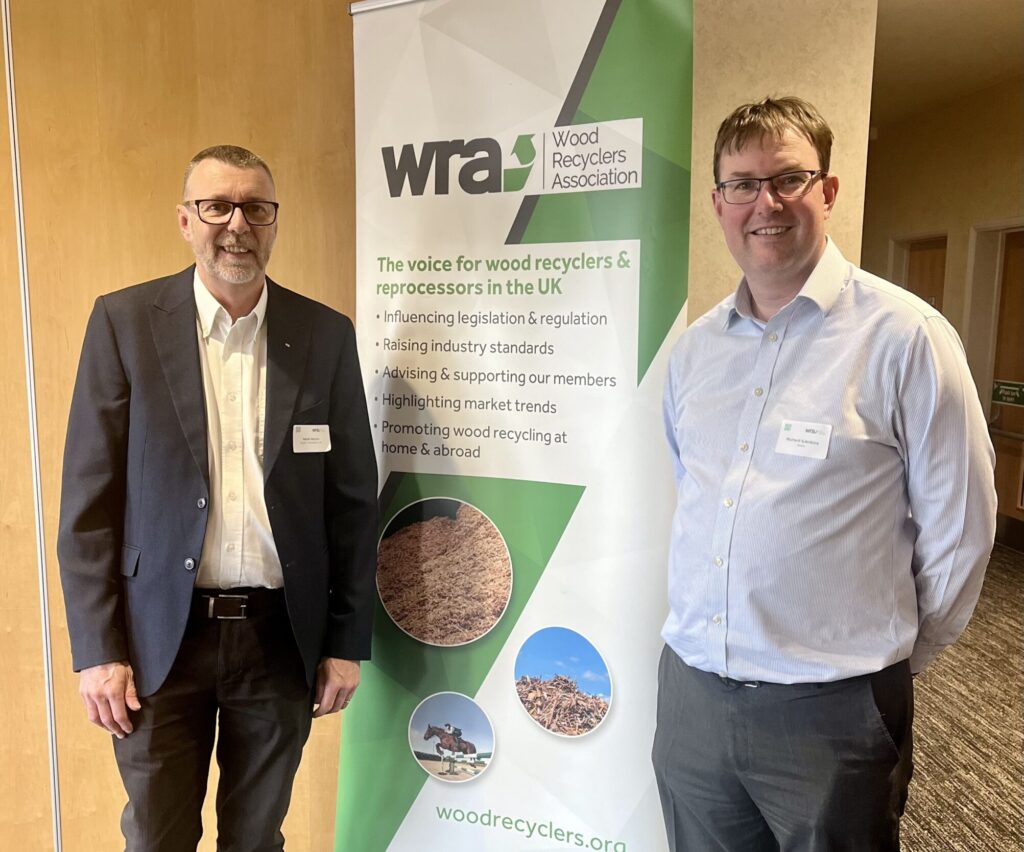Importantly, the documents mean that local authorities can continue to handle two types of waste wood which may be hazardous – fence posts and decking – at HWRCs or civic amenity sites.

Following a four year project – the Waste Wood Classification Project – the documents now available are as two separate sets of Waste Wood Assessment Guidance.
One is for those working in the wood recycling sector and the other for those in the construction and demolition sector. They have been produced by the Wood Recyclers’ Association working with the National Federation of Demolition Contractors and others.
The guidance aims to help waste producers and operators understand and follow procedures to ensure the correct waste wood ends up in the right end market. The guidance works with the regulatory statements published by the Environment Agency on 23 July 2021.
‘Conclusion’
Julia Turner, executive director of the Association, has been leading the project since it began in 2017. She said: “We are pleased to have finally reached a conclusion for operators in England and we are satisfied that this is the best way forward for all concerned.”
“We are satisfied that this is the best way forward for all concerned.”
Julia Turner
Wood Recyclers Association
“We are still working with the regulators in Wales, Scotland and Northern Ireland to finalise the position for operators in those nations but hope to have this agreed very soon.”
Mrs Turner added: “On behalf of the WRA I would like to extend my thanks to all involved in this project.”
‘Grateful’
Howard Leberman, team leader for the national leads on non-hazardous waste, biowaste, waste exemptions and fire prevention at the Environment Agency said: “We have worked very closely with the WRA and their partners on this project and I am grateful to all the sector organisations that have played a part for their commitment to this undertaking.
“We still expect the majority of hazardous waste wood to be identified, segregated and consigned to facilities authorised to receive such waste.”
“We support the publication of industry guidance which identifies waste wood types that are potentially hazardous. With on-going sampling and testing by industry, we are confident that some wood types currently identified as hazardous can be moved to non-hazardous.
“Our time-limited Regulatory Position Statements provide a risk-based and proportional approach to how specific types of hazardous waste wood can be handled. However, we still expect the majority of hazardous waste wood to be identified, segregated and consigned to facilities authorised to receive such waste.”
Two statements
The Environment Agency REgulatory Position Statements are as follows:
RPS 249: This allows potentially hazardous waste wood received at household waste recycling centres (HWRCs) to move as un-assessed, non-hazardous material as long as it is destined for Industrial Emissions Directive (IED) Chapter IV compliant biomass or the manufacture of panel board. RPS 249 applies to household waste recycling centres (HWRCs) only and states: “It allows HWRCs to accept, from householders, the small amount of certain waste wood types that would test as hazardous. You can store this waste with non-hazardous household waste wood under your existing environmental permit. You can classify this mixed waste wood as non-hazardous and move it under a waste transfer note.”
Mixed household waste wood sent from HWRCs must be destined for one of the following:
- an Industrial Emissions Directive Chapter IV compliant permitted incinerator or co-incinerator
- the manufacture of engineered or composite boar
This RPS will remain in place until the end of March 2024 to give the waste wood industry time to demonstrate that there is no longer any hazardous content in household waste wood. The WRA said this content is “already diminishing” and is not expected to exist at all by the time the RPS expires.
RPS 250: This covers hazardous waste wood from demolition and refurbishment activities. This now requires all waste wood from construction and demolition sites to be assessed, and where deemed hazardous, consigned as hazardous waste using a hazardous waste consignment note with the correct waste codes.
However it also allows for the collection, storage, processing and blending of potentially hazardous waste wood from domestic premises, demolition sites and other business premises, to be carried out under existing environmental permits. This RPS will remain in place until the end of August 2023.
Both sets of the new Waste Wood Assessment Guidance explain how to work under the new RPSs in detail, said the Wood Recyclers Association.
The documents are available at the links below.
Related links
Wood Recyclers Association assessment guidance
Waste-Wood-Grades July-2021 pdf
Receiving hazardous waste wood at household waste recycling centres: RPS 249
Hazardous waste wood from demolition and refurbishment activities: RPS 250







Subscribe for free